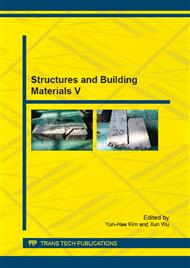p.38
p.42
p.48
p.52
p.59
p.64
p.69
p.74
p.85
Multi-Level Structural Characteristics and Quasi-Static Analysis of the Hagia Sophia Using Finite Element Method
Abstract:
The historic Hagia Sophia in Istanbul, which held the record as the world's largest domed building for about 800 years, is analyzed with a 3D finite element formulation, by using commercial FEA software ANSYS Workbench 14.5, to understand its structural behaviour under the action of static loading. Four different levels of structural systems are demonstrated and the their effects on the maximum values of the first principal stresses in the main dome are discussed.
Info:
Periodical:
Pages:
59-63
Citation:
Online since:
July 2015
Price:
Сopyright:
© 2015 Trans Tech Publications Ltd. All Rights Reserved
Share:
Citation:


